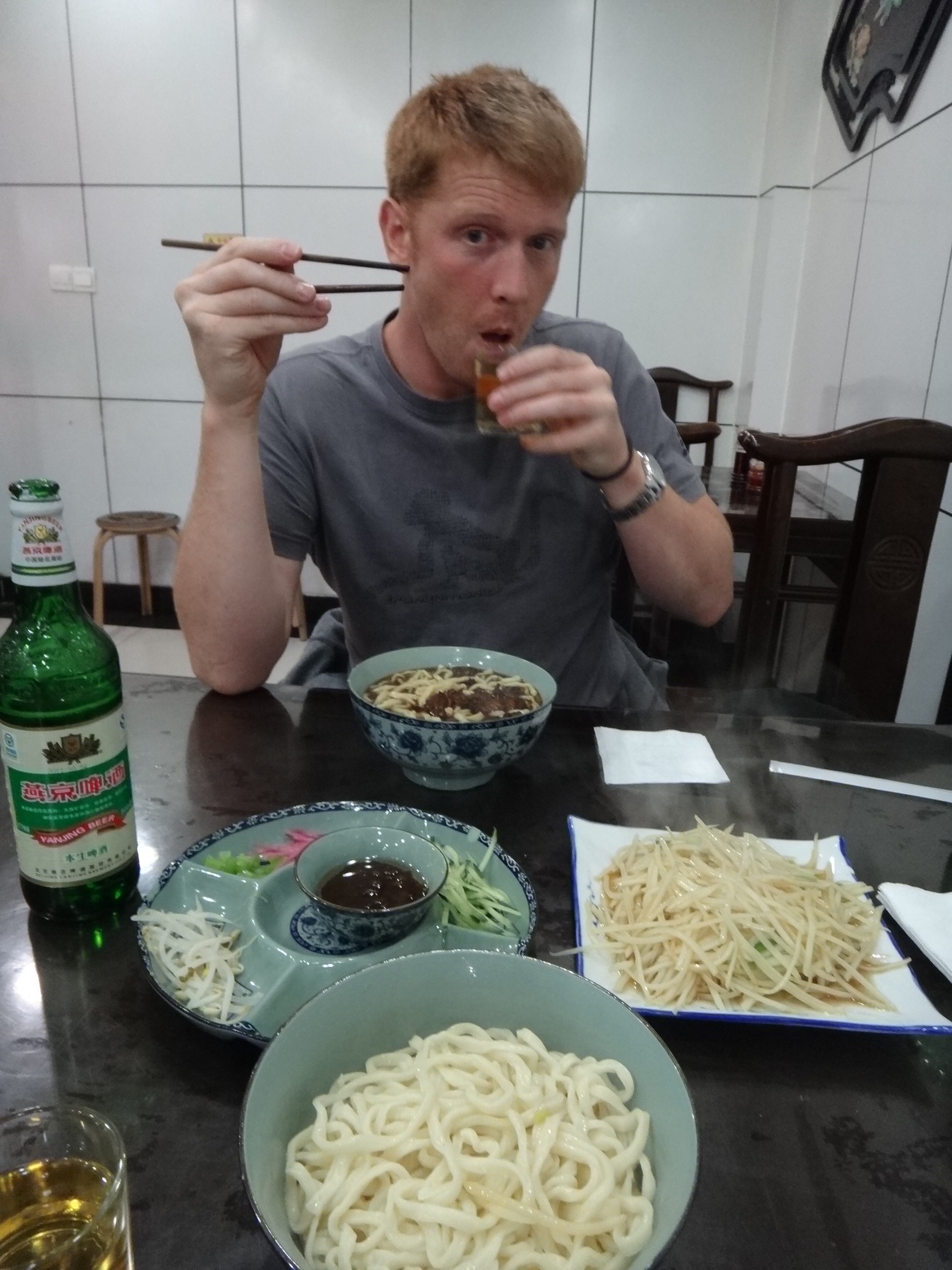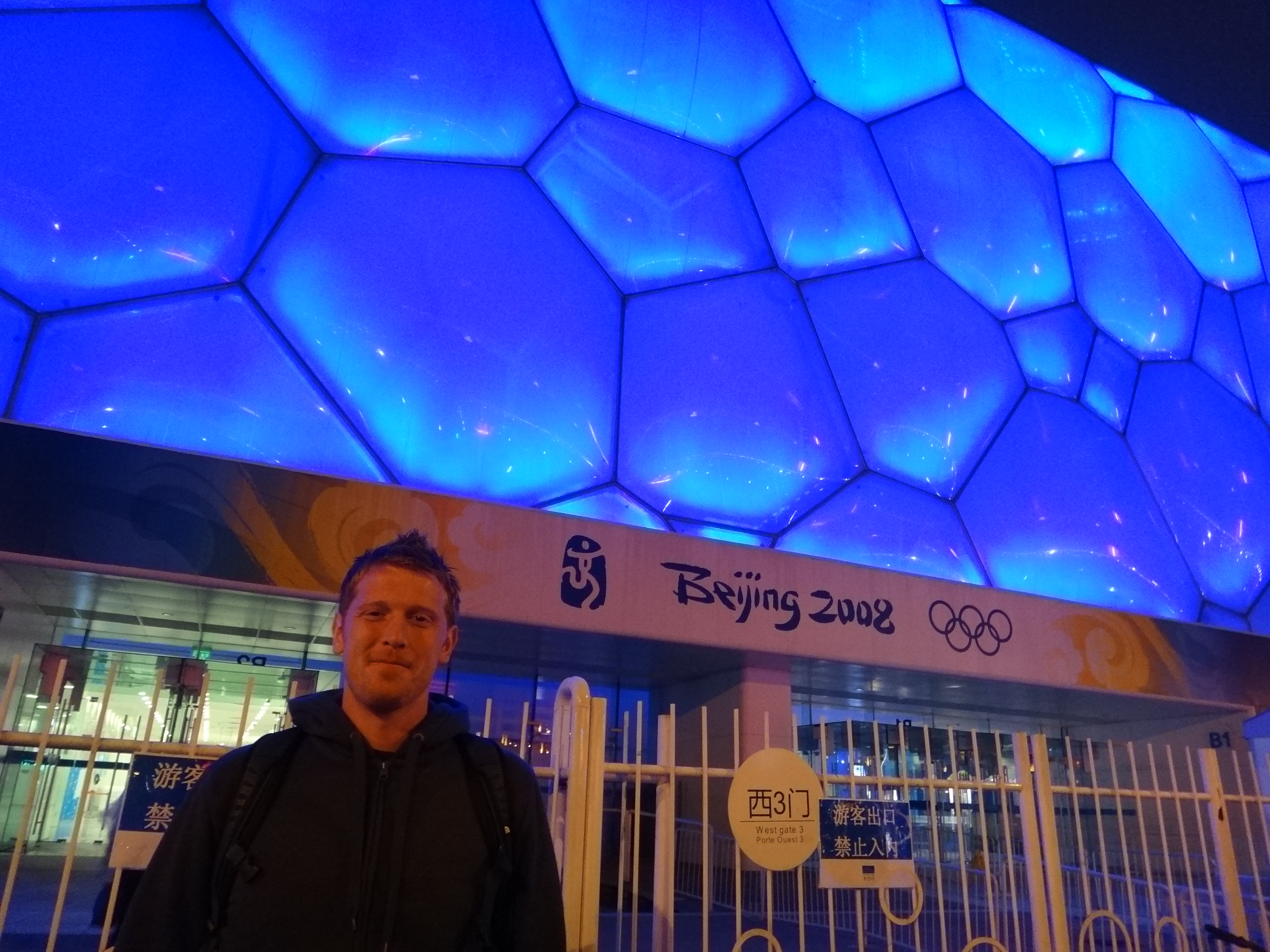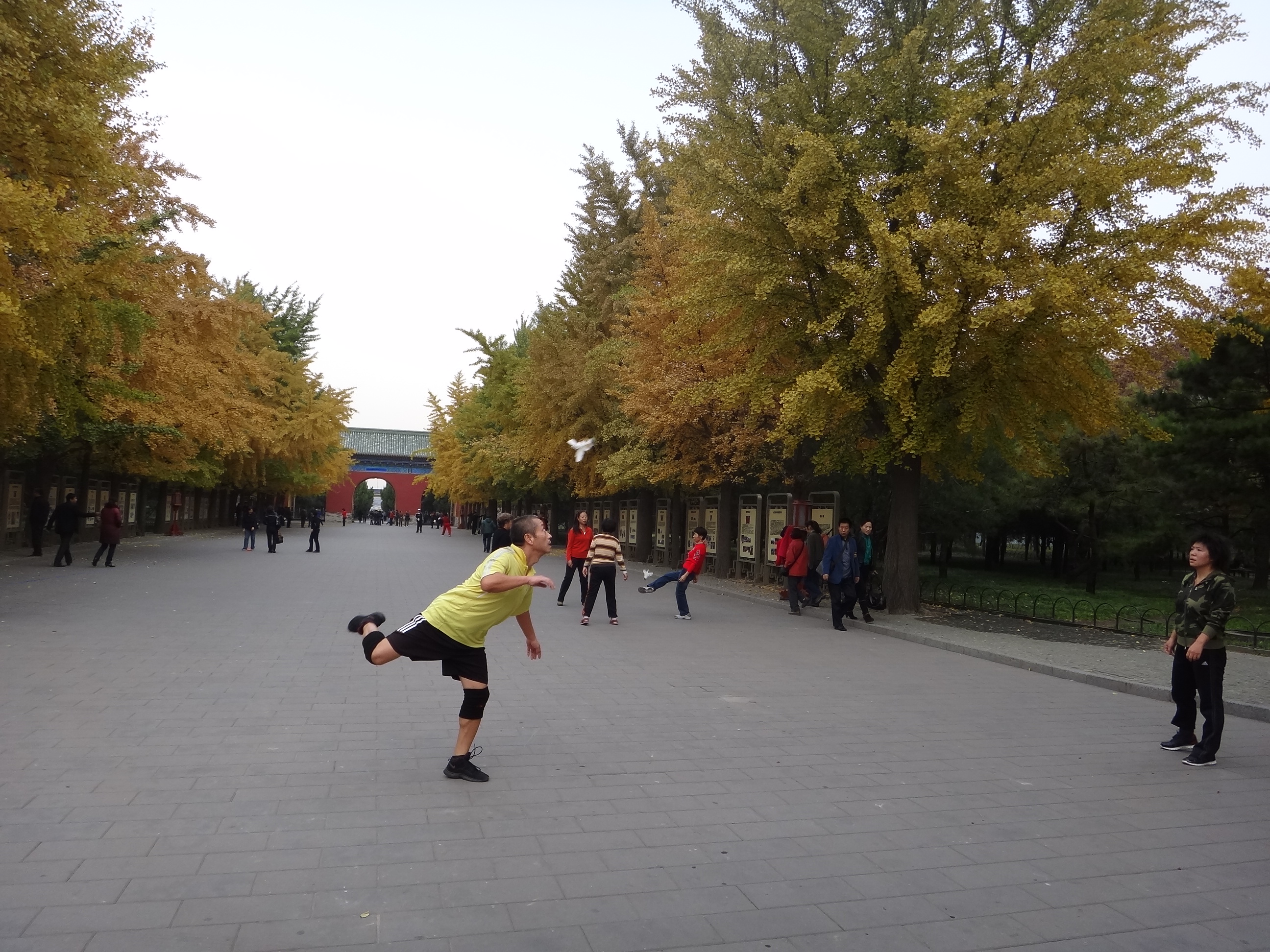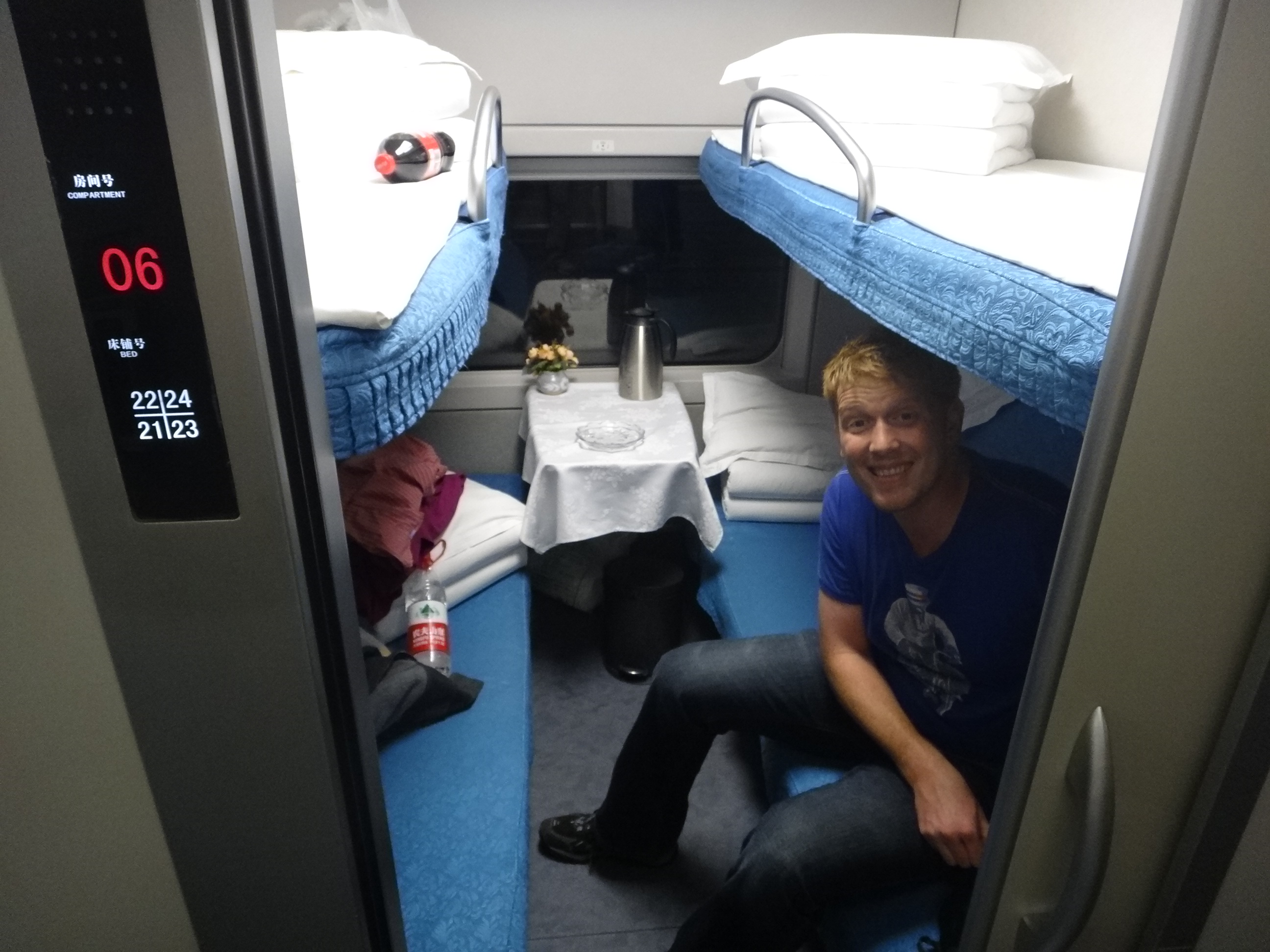My first trips to Beijing were in 2008, on study abroad excursions. Since then I’ve returned to the city at least once or twice every year, always accompanying friends or family who are visiting for the first time; each time finding something new myself.
From these visits I started to imagine a first-time visitor’s guide to Beijing. When Mike and I decided to spend three days in the Chinese capital, I took the opportunity to test out my itinerary. After all, I didn’t want him to miss any “must-sees”, but I didn’t want to waste his time either.
So this is how we spent three days in Beijing. As a historically and culturally rich city, you could easily spend a week or more exploring – but if you’re short on time, I think three days is perfect for seeing the highlights of the city.
Day 1: Walk through the city; Wangfujing
Our first day in Beijing was considerably shortened because it was mostly spent on travel. Our high-speed train arrived at 1 PM, a relatively quick five-hour trip from Shanghai — but that was half our day gone already.
We checked into our hostel, then immediately headed to the main railway station to book our return train to Shanghai. Due to recent restrictions, certain ticket classes require you to go to the ticket office in person, and with your passport – so we couldn’t buy our return tickets in advance.

The neighborhood around our hostel
So while this step was unavoidable, it at least allowed us a walk through the hutongs and a little bit of the city. But by the time we were free to truly explore, it was already 5 PM.
From the railway station we rode the subway a few stops to Wangfujing. Note: in Beijing, all subway tickets are 2 RMB ($0.30), no matter the distance. Wangfujing is a Westernized shopping area, with one very famous snack street. Every travel show I’ve ever seen with a Beijing segment features it, and these snacks:

Scorpions, starfish, and seahorses - oh my!
There’s more to the street than fried creepy crawlies, and we spent half an hour walking through the stalls, occasionally choosing some squid balls to snack on, or a more traditional sheng jian bao (fried dough balls with meat filling).
Afterwards, needing a more proper meal than squid and greasy dough, we went back to our hostel and chose one of the many hole-in-the-walls for dinner.

Noodles, potatoes, beer: staples of the Northern diet
After a carb-filled dinner of pulled noodles, tudou si (potato strips), and local Yanjing beer, we went to bed early in preparation for…
Day 2: The Great Wall; Olympic Park
The day started early as we woke up at 7 to hike my favorite section of the Great Wall: the Remnants Great Wall at Badaling. Featuring a three-hour hike on an isolated, almost abandoned section of the Wall, it beats any tour with chair lifts and toboggan slides. It’s a bit more challenging, but ultimately a heaps more authentic and rewarding experience.

The sun had already set by the time we returned to Beijing from the climb at 5 PM. This meant we could immediately head out to Olympic Park, which, in my opinion, is best after dark.
Conveniently accessible by subway or bus, Olympic Park features the iconic National Stadium and National Aquatics Center, more commonly referred to as the Birds’ Nest and Water Cube. The venues still appear to be in good shape, and lit up at night, it’s easy to imagine and re-live the glory of the 2008 Olympics.

We were there for half an hour, tops — there isn’t much to do other than walk around and take photos. We took a taxi back, and asked the driver to drop us off at the Forbidden City. That way we could walk the rest of the way to our hostel, along the way seeing Tiananmen Square and the Forbidden City lit up at night.

Tiananmen Square
At this point the night was still young and we could have gone for a few drinks in Sanlitun, but we were exhausted and decided to rest up for our final – and busiest – day in Beijing.
Day 3: Tiananmen Square, Forbidden City, Temple of Heaven, Summer Palace
Yes, it’s possible to hit up all these attractions in one day. It helps to stay in a hostel in an advantageous location — we started at 9 AM from ours, which was conveniently only a couple blocks from Qianmen, the southern gate of Tiananmen Square. We meandered through the Square until we reached the entrance of the Forbidden City.

Segway-ing through Tiananmen Square (Forbidden City in the background)
Walking through the first gates of the Forbidden City is free; it isn’t until you hit the second entrance that tickets are required. From experience, I’d say that unless you really care about the history of the place, don’t stay for too long, or even go in at all.
Get a feel for the grandeur of the place from the outside, and maybe a little walk inside, but it very quickly becomes nothing but palace after palace, hall after hall, and dozens of gates and courtyards — and all of them so crowded with tourists. Watch The Last Emperor if you really want to understand the Forbidden City’s history and significance, or just to see what it’s like pre-tourists and restorations.

Second gate of the Forbidden City
From the Forbidden City we hailed a taxi to the Temple of Heaven, a complex where Emperors used to go to pray for good harvests. The most famous of the three temples is the Hall of Prayer for Good Harvests.

Even if temples aren’t your thing, the park itself is worth a visit. Locals come here to exercise or socialize, and as we walked between temples we stopped to watch the elderly dancing and practicing tai chi, a busking duo playing traditional Chinese music, and groups of people kicking about a weighted shuttlecock.

Shuttlecock circles at the Temple of Heaven
We returned to Wangfujing for a time-consuming two-hour lunch and conference call (Mike can never escape work). But from there it was convenient to take the subway and ride all the way out to the Summer Palace — again, for only a mere 2 RMB.

Summer Palace
We circled from the back of the grounds to front, walking around the Summer Palace then taking the boat across the lake to the main bridge and entrance. We walked until it got dark and were nearly the last ones to leave.
From the main entrance, we took a taxi to the Beigongmen subway station, then rode the Line 4 back into the city. After a quick stop back at the hostel for our suitcase, we went to the train station and caught our overnight back to Shanghai — thus concluding our three days in Beijing.

Overnight train to Shanghai
What We Missed:
If we had extra time, or didn’t lose most of our first day to transportation, these are some of the places I would have added to the itinerary:
Peking Duck: While street food is usually some of the best grub you’ll find, Mike unfortunately got food poisoning after dinner the first night. This meant we didn’t eat much the rest of the trip, and when we did, it was Western food that he could stomach. However, Peking Duck is a must-try when you’re in Beijing.

The most “local” duck experience I’ve had has been at Li Qun — hidden in a maze of hutongs, it looks run-down and depending on your standards, downright questionable…but the wall of celebrity photos does its part to deter your doubts. After all, the tastes of Al Gore can’t be wrong, right?
Drum and Bell Tower: An old historic area set back a little from the main attractions, the Drum and Bell Tower is great for walking in a more local area — and on a clear day, you get a great view over Beijing.
Houhai: A lake area in central Beijing, Houhai is surrounded by curio shops, is nice for a relaxing lake-side walk, and has plenty of bars where you can chill.

Silk Market: Not highly recommended — but if you’re not going to make it down to Shanghai, don’t mind people yelling in your face, and really want something, then check it out. In fairness, it’s not completely terrible – I once bought a fake Columbia jacket here for 200 RMB ($30), and it has so far worked beautifully and lasted through several cold winters.
Sanlitun: A well-known bar street, often filled with Westerners and tourists. If you’re looking for a quick and easy place to go for a drink, this is the quick and easy answer. However, if you’re looking for something a bit more local, check out Beijing Boyce — he’s got the lowdown on enjoying a drink in Beijing.
One more thing: ExploreBeijing is by far the best subway map you’ll find. It gives you subway timetables, estimated travel time, info on the surrounding attractions — basically everything you need to know to travel by subway. Bookmark the website or download the app before you go.




2 Comments
The Wall Less Traveled: Hiking Remnants of the Great Wall | Expat Edna
January 9, 2012 at 15:11[…] taking him on this tour was a no-brainer. Planned for Day 2 of our Beijing itinerary, we woke up early to make […]
[In Photos] 2011 – A Year of Travel | Expat Edna
January 18, 2012 at 07:20[…] Though we only had three days in Beijing, in that period we managed to visit most of the main sites: Tiananmen Square, the Forbidden City, […]